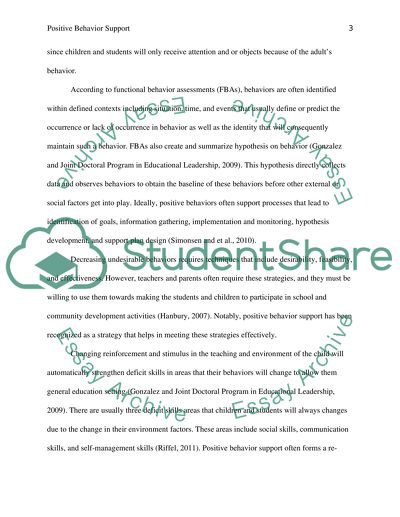Cite this document
(“Positive Behavior Support Research Paper Example | Topics and Well Written Essays - 2250 words”, n.d.)
Retrieved from https://studentshare.org/education/1462825-positive-behaviour-support
Retrieved from https://studentshare.org/education/1462825-positive-behaviour-support
(Positive Behavior Support Research Paper Example | Topics and Well Written Essays - 2250 Words)
https://studentshare.org/education/1462825-positive-behaviour-support.
https://studentshare.org/education/1462825-positive-behaviour-support.
“Positive Behavior Support Research Paper Example | Topics and Well Written Essays - 2250 Words”, n.d. https://studentshare.org/education/1462825-positive-behaviour-support.


